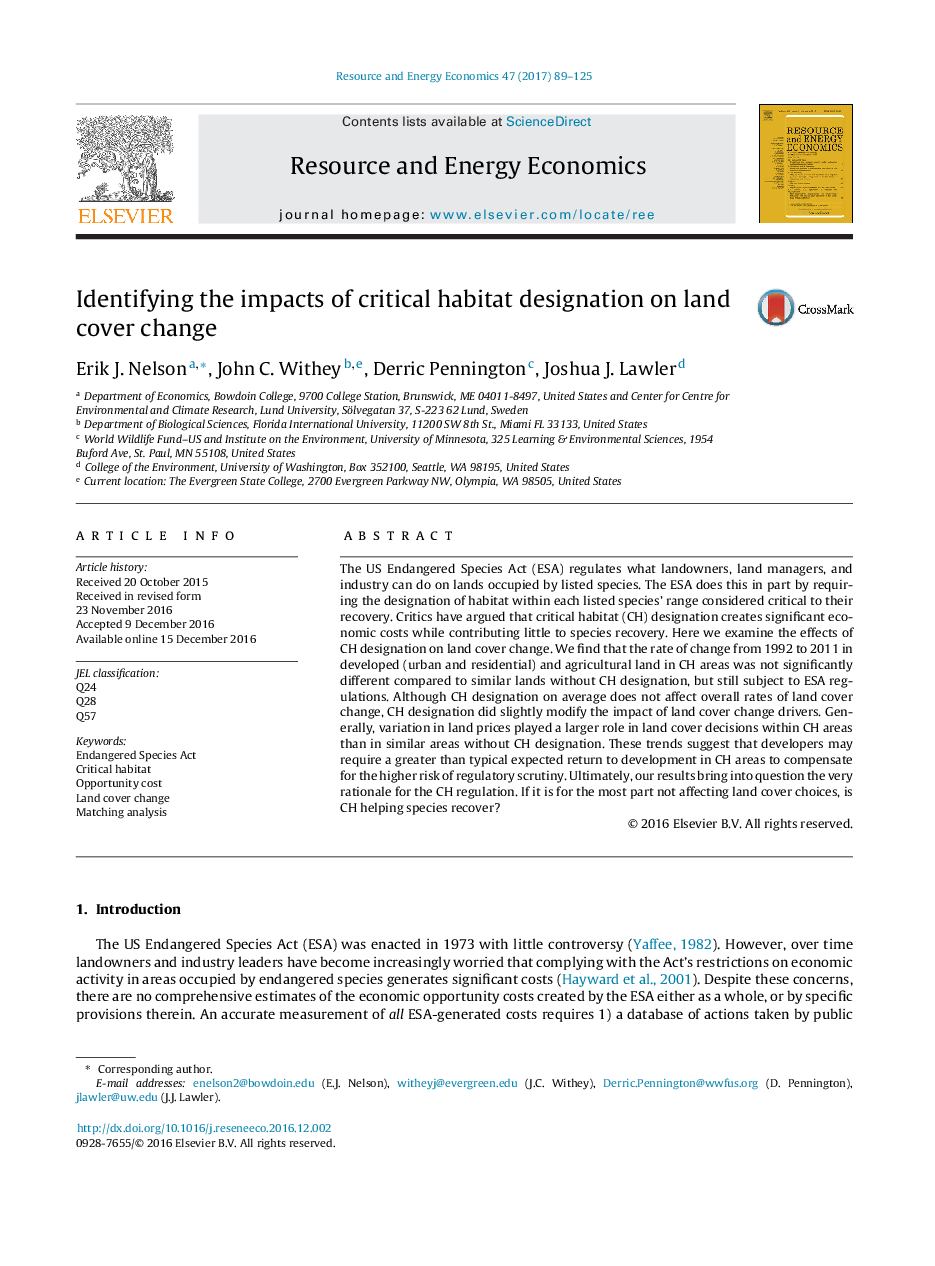| Article ID | Journal | Published Year | Pages | File Type |
|---|---|---|---|---|
| 5104104 | Resource and Energy Economics | 2017 | 37 Pages |
Abstract
The US Endangered Species Act (ESA) regulates what landowners, land managers, and industry can do on lands occupied by listed species. The ESA does this in part by requiring the designation of habitat within each listed species' range considered critical to their recovery. Critics have argued that critical habitat (CH) designation creates significant economic costs while contributing little to species recovery. Here we examine the effects of CH designation on land cover change. We find that the rate of change from 1992 to 2011 in developed (urban and residential) and agricultural land in CH areas was not significantly different compared to similar lands without CH designation, but still subject to ESA regulations. Although CH designation on average does not affect overall rates of land cover change, CH designation did slightly modify the impact of land cover change drivers. Generally, variation in land prices played a larger role in land cover decisions within CH areas than in similar areas without CH designation. These trends suggest that developers may require a greater than typical expected return to development in CH areas to compensate for the higher risk of regulatory scrutiny. Ultimately, our results bring into question the very rationale for the CH regulation. If it is for the most part not affecting land cover choices, is CH helping species recover?
Keywords
Related Topics
Physical Sciences and Engineering
Energy
Energy (General)
Authors
Erik J. Nelson, John C. Withey, Derric Pennington, Joshua J. Lawler,
